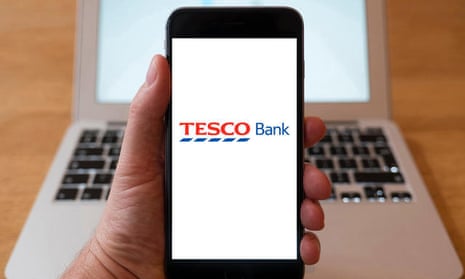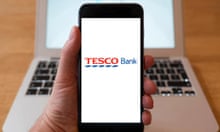A team of academics claims an unsophisticated type of cyber attack that exploits “flaws” in the Visa card payment system was probably used to defraud Tesco Bank customers of £2.5m last month.
In an academic paper, the team at Newcastle University claimed that working out the card number, expiry date and security code of any Visa credit or debit card could take a criminal “as little as six seconds” and involved nothing more than guesswork.
They said the so-called “distributed guessing attack” method they had identified was able to circumvent all the security features put in place to protect online payments from fraud, and exploited vulnerabilities at Visa – which has more than 500m cards in circulation in Europe alone – and hundreds of the world’s biggest and most popular retail websites. Some sites have changed their online security settings in response to the findings.
Visa said the research did not take into account the multiple layers of fraud prevention that exists within the payments system, “each of which must be met in order to make a transaction possible in the real world”.
The research paper, whose lead author is a 26-year-old PhD student, said the good news for people with MasterCard debit and credit cards was that this form of hacking did not work on MasterCards, because its systems were able to detect the attacks. It added that the minority of online retailers that used so-called 3D Secure technology to provide extra protection – such as the Verified by Visa, Mastercard SecureCode and American Express SafeKey systems – were also “safe” from this type of attack.
The paper was published weeks after Tesco Bank suffered what was described as an unprecedented attack on its online accounts, which affected 9,000 customers and resulted in the theft of £2.5m.
The type of hacking identified by the Newcastle team involves criminals using merchants’ payment websites to “guess” people’s card details. The criminals use software that automatically generates different variations of a card’s security data – for example, the card number, expiry date and three-digit security code known as the CVV – and fires these off to hundreds or even thousands of websites around the world at the same time. The reply to the transaction will confirm whether or not the guess was right.
Because Visa’s network did not detect multiple invalid payment requests on the same card from different websites, “unlimited guesses” could be made by spreading the guesses over a large number of sites, even if individual merchants limited the number of attempts. This meant that “within seconds, hackers are able to get a ‘hit’ and verify all the necessary security data”.
Once they have all the details, the criminal can use these to buy goods online or, potentially, open a money transfer account and send cash to an anonymous recipient abroad.
The Newcastle team used a set of software tools – including a website “bot” and automated scripts – and their own bank cards, including seven Visa ones, to carry out an experimental distributed guessing attack. They chose 400 of the world’s biggest commercial websites for their investigation, including Google, Amazon, iTunes and PayPal, before later whittling this down to 389. Of these, 47 made use of 3D Secure systems, which meant they could not be attacked in this way. That left 342 that were vulnerable.
The research paper stated that the experiment proved that this type of attack was practical and so a credible threat, and also that it was possible to run multiple bots at the same time on hundreds of payment sites “without triggering any alarms in the payment system”.
Mohammed Ali, a PhD student in Newcastle University’s school of computing science and lead author on the paper, said: “Most hackers will have got hold of valid card numbers as a starting point, but even without that, it’s relatively easy to generate variations of card numbers and automatically send them out across numerous websites to validate them.”
He added: “The next step is the expiry date. Banks typically issue cards that are valid for 60 months, so guessing the date takes at most 60 attempts. The CVV is your last barrier and theoretically only the cardholder has that piece of information – it isn’t stored anywhere else. But guessing this three-digit number takes fewer than 1,000 attempts. Spread this out over 1,000 websites and one will come back verified within a couple of seconds. And there you have it: all the data you need to hack the account.”
Ali said MasterCard’s centralised network was able to detect a guessing attack after fewer than 10 attempts, even when those payments were distributed across multiple networks.
The team said this guessing attack method was likely to have been used in the Tesco cyber-attack, and was “frighteningly easy if you have a laptop and an internet connection … The risk is greatest at this time of year, when so many of us are purchasing Christmas presents online.” Their research has been published in the academic journal IEEE Security & Privacy.
In a statement, Visa said it was “committed to keeping fraud at low levels, and works closely with card issuers and acquirers to make it very difficult to obtain and use cardholder data illegally … We provide issuers with the necessary data to make informed decisions on the risk of transactions. There are also steps that merchants and issuers can take to thwart brute force attempts”.
The spokesman said that in cases where someone’s card details were used fraudulently the cardholder was protected from liability and added that where a merchant chose not to use its Verified by Visa system for a card-not-present transaction, they assumed the risk for fraud. “Visa welcomes industry and academic efforts to identify and address perceived vulnerabilities in the payment system.”
Tesco Bank said it refunded each customer account in full and no customer data was lost or stolen. “This incident has highlighted that all banks need to work together in the interests of all customers and the financial system,” a spokesman said.








